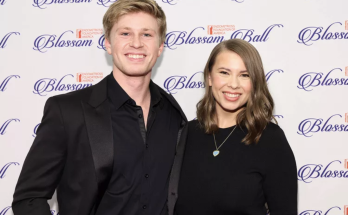Among the three dozen White House alums who were tasked with briefing the press, a handful went on to make names for themselves outside of the president’s shadow
:max_bytes(150000):strip_icc():focal(749x0:751x2):format(webp)/dana-perino-george-stephanopoulos-sarah-huckabee-sanders-042425-c6f730a88da2412790c38998e8740b47.jpg)
The role of White House press secretary has dramatically evolved since the position was established nearly 100 years ago, when newspapers and radio still dominated the mediasphere and the American public remained far removed from the Oval Office.
Through the popularization of television, internet, podcasts and social platforms, press secretaries are now among the most visible people in every administration, standing in front of cameras and microphones on a near-daily basis to act as a mouthpiece for the United States president.
The celebrification of the powerful role has given many modern-day press secretaries platforms to find success as public figures after leaving the White House. While many secretaries in history have gone on to enjoy private careers as business executives and communication professionals, a handful remained in the spotlight and built upon their legacies as news anchors, politicians, activists and even TV consultants.
Among the three dozen people who have served in the capacity of White House press secretary, here are nine who went on to make names for themselves outside of the president’s shadow.
Jen Psaki
:max_bytes(150000):strip_icc():focal(749x0:751x2):format(webp)/jen-psaki-042425-f4240f81739a4ceb856ce05840f28729.jpg)
Jen Psaki carried the Biden administration through its first year of press briefings, earning a reputation as a thoughtful leader among the White House comms team. A former communications director under Barack Obama, Psaki served nearly 16 months in the Biden White House before submitting her resignation.
Though Psaki credited her departure with wanting to be more present for her young children, she didn’t go into hiding. After a four-month break she began a new role with the NBCUniversal News Group, and by early 2023, she was given her own public affairs show on MSNBC.
In May 2025, Psaki became the new face of MSNBC prime time with The Briefing, a nod to her time at the White House.
Kayleigh McEnany
:max_bytes(150000):strip_icc():focal(749x0:751x2):format(webp)/kayleigh-mcenany-042425-ca777a4ccccc4730a805edc0d165dd85.jpg)
Kayleigh McEnany was brought into the Trump administration for the final nine months of his first presidency, just as the COVID-19 pandemic and 2020 election season were ramping up. Early in her tenure, she resumed the tradition of hosting White House press briefings after the administration had stopped the practice for a stunning 417 days.
When Trump completed his first term and McEnany’s tenure came to a natural end, she joined Fox News as an on-air contributor before being tapped to co-host the network’s women-led talk show, Outnumbered.
During the 2024 Republican primary season, Trump unexpectedly turned on McEnany for citing a poll that he believed underestimated his lead in the race. Nicknaming her “milktoast” — an apparent misspelling of “milquetoast” — he publicly soured their relationship despite her loyalty in the White House.
Sarah Huckabee Sanders
:max_bytes(150000):strip_icc():focal(749x0:751x2):format(webp)/sarah-huckabee-sanders-042425-57a5721e629a40b998ab59f6973214c5.jpg)
Sarah Huckabee Sanders was one of four White House press secretaries during Trump’s first term, and arguably the most memorable. Known for her confrontational style with reporters and frustrated facial expressions at the podium, she held the title for nearly two years.
Sanders served as an on-air contributor to Fox News after leaving the White House in the middle of the term, and days after Trump left office in 2021, she announced that she would run for governor of Arkansas.
In the 2022 elections, Sanders was elected the first female governor of Arkansas. She followed in the footsteps of her father, former Arkansas Gov. Mike Huckabee, who led the state for more than 10 years in the ’90s and ’00s.
Dana Perino
:max_bytes(150000):strip_icc():focal(749x0:751x2):format(webp)/dana-perino-042425-4c0e843b3e714f4fad8081929e5121a5.jpg)
Dana Perino is now recognized as one of the leading women on Fox News, but she first became a national figure as a core member of President George W. Bush’s communications team, including as the second-ever female press secretary for more than two and a half years until Bush left office.
Perino wrapped up her time in the role with a black eye, caused by the commotion that ensued when an Iraqi journalist threw shoes at Bush during a now-infamous press conference.
After leaving the White House, Perino was tapped to serve on the Broadcasting Board of Governors by President Barack Obama, but her bigger move was joining Fox News as a political commentator, which snowballed into a successful career at the helm of its programming on shows like The Five and America’s Newsroom.
George Stephanopoulos
:max_bytes(150000):strip_icc():focal(749x0:751x2):format(webp)/george-Stephanopoulos-042425-5068a302cf8a48bbb7077a9967199891.jpg)
Though George Stephanopoulos never officially held the title of White House press secretary — his formal role was as the communications director — he served as the de facto press secretary at the beginning of Bill Clinton’s presidency, handling the briefings with reporters.
Only a few months into the role, Stephanopoulos transitioned away from White House comms to instead be a senior adviser to Clinton on policy and strategy through the rest of his first term.
Stephanopoulos — whose education centered around political science and theology — pivoted to journalism after leaving Clinton’s administration, investing his career in ABC News and working up from a political analyst to the host of This Week by 2002. He still leads the Sunday morning political affairs program in addition to co-anchoring Good Morning America.
Dee Dee Myers
:max_bytes(150000):strip_icc():focal(749x0:751x2):format(webp)/dee-dee-myers-042425-835081a5c4754f7da8ec8f2ddd4c3df7.jpg)
Dee Dee Myers made history as the first-ever woman to serve as White House press secretary. Just 31 years old when Clinton tapped her to join the administration, she was also the second-youngest to hold the title at the time.
Myers battled headwinds as she settled into the role, making less money than her predecessors, getting limited access to the president, and spending her first several months under the shadow of White House comms director George Stephanopoulos, who ran the press briefings himself for a while. When Myers began briefing the press corps on her own, she relied on “humor and patience” to overcome challenges of defending the early Clinton administration, as The Seattle Times admired in 1994.
After Myers left government, she remained on TVs, co-hosting a political talk show on CNBC and beating out RFK Jr. and Jesse Jackson Jr. on an episode of Celebrity Jeopardy! She left her strongest mark as a consultant on The West Wing, also serving as an inspiration for Allison Janney‘s iconic character, White House press secretary C. J. Gregg.
Jim Brady
:max_bytes(150000):strip_icc():focal(749x0:751x2):format(webp)/james-brady-042425-5e13531572f547589711c1554124c2fe.jpg)
Jim “Bear” Brady had been on the job for only 69 days at the start of Ronald Reagan’s first term when gunman John Hinckley Jr. opened fire at the president and his team as they were leaving a D.C. hotel. Brady — who was shot in the head by a bullet packed with explosives — suffered the most serious injuries of the four victims, which included President Reagan.
Brady’s wound left him with permanent disabilities, including speech challenges and partial paralysis that required him to use a wheelchair. Though he was unable to continue carrying out the duties of press secretary and placed on leave, Reagan allowed him to keep the title — and continue collecting a salary — for the entire eight-year presidency, while his successors were considered “acting” press secretaries.
Before dying in 2014 of complications from the 1981 shooting, Brady and his wife, Sarah Brady, became vocal advocates for gun violence prevention, aiming to show that even Republican gun owners could get behind stricter gun safety measures. His wife worked with heavily with the Brady Campaign to Prevent Gun Violence and helped get the landmark “Brady Bill” passed in his honor, which required background checks and waiting periods for handgun purchases. Brady remains a prominent face of the gun safety movement who was embraced by administrations on both sides of the aisle.
Bill Moyers
:max_bytes(150000):strip_icc():focal(749x0:751x2):format(webp)/bill-moyers042425-9c16b79cd9ce43d88e92b1b9f40cf532.jpg)
Journalist-turned-political aide Bill Moyers had already played key roles in launching The Peace Corps and establishing a public broadcasting system when he became President Lyndon B. Johnson’s chief of staff. He later transitioned to the role of White House press secretary, bringing impressive experience to the post.
The New York Times once remarked that Moyers was the “ideal press secretary,” noting in a 1966 profile that the White House press corps found him “informed, concise, quotable and sympathetic to their problems.”
After leaving the Johnson administration, Moyers built a prolific journalism career that he kept up into his late 80s, earning him nearly every prestigious TV journalism award, including more than 30 Emmys and induction in the Television Hall of Fame. His post-White House career began at conservative-leaning newspaper Newsday — where he pulled the outlet’s coverage to the left as its publisher — then he held on-air roles at CBS News, NBC News, MSNBC and PBS. In the final year of Trump’s first term as president, he hosted a podcast series called Moyers on Democracy.
Pierre Salinger
:max_bytes(150000):strip_icc():focal(749x0:751x2):format(webp)/pierre-salinger-042425-f2cc2a247745437ba08c2c93a5ca0f73.jpg)
Pierre Salinger, the 9th White House press secretary, carried out his duties through the entirety of John F. Kennedy’s presidency, remaining in the position for four months under Lyndon B. Johnson as the nation reeled from JFK’s assassination and the subsequent chaos in Washington.
At the forefront of the TV briefing era, Salinger became a celebrity-like figure who navigated the role with “wit, enthusiasm and considerable disdain for detail,” as The New York Times reported in 1962. After leaving the position, he was appointed to fill a vacant California Senate seat, which he only occupied for about five months


